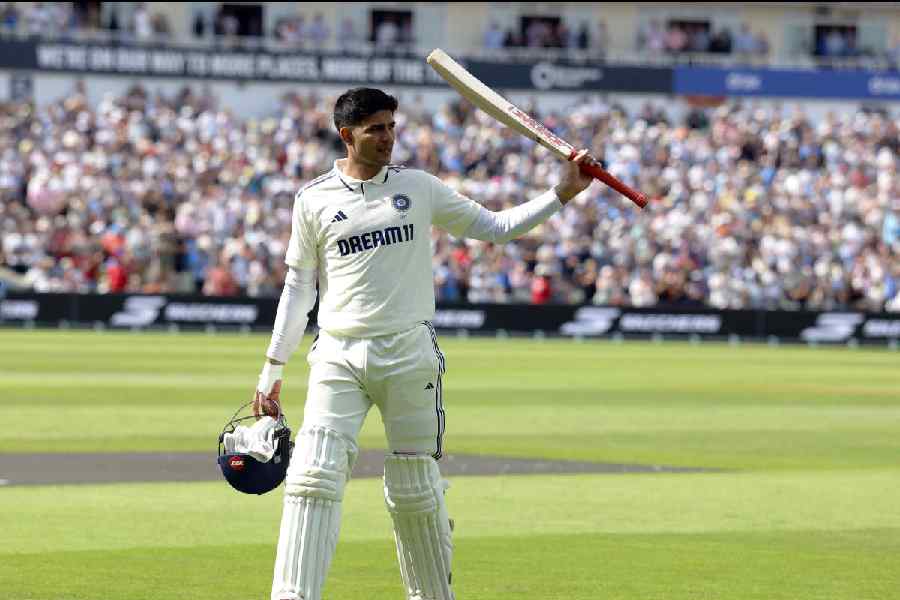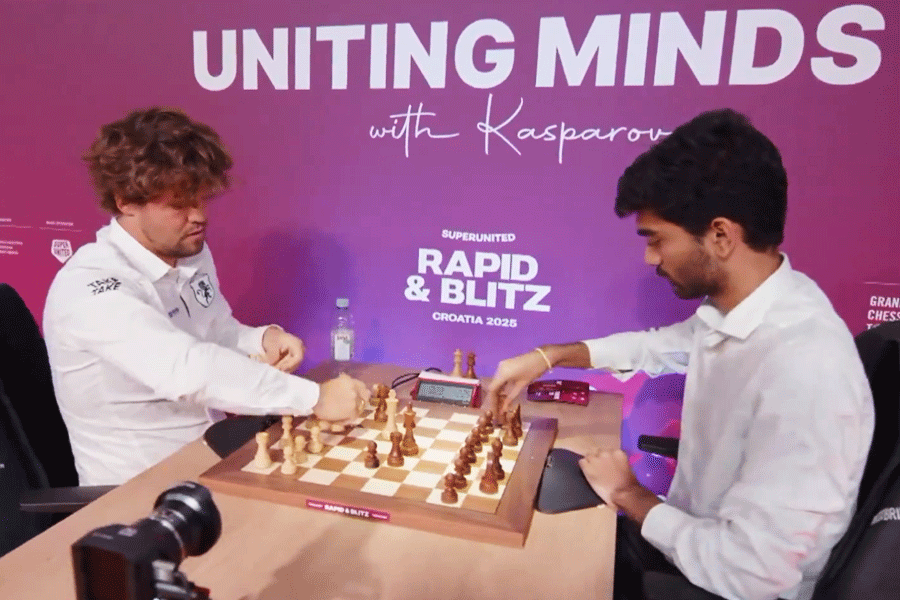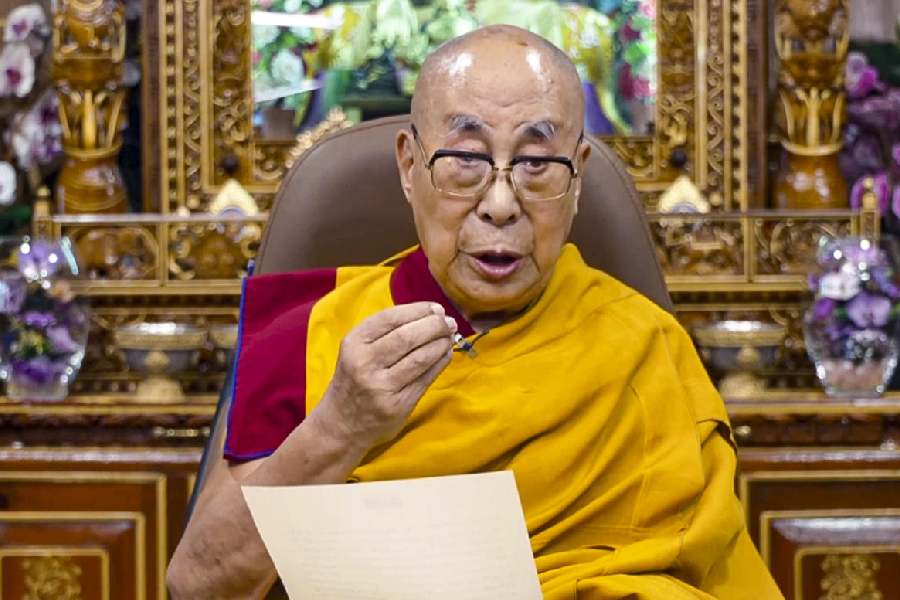 |
| BACKLOG: The biggest losers are the cases on the cause lists |
Just how long can a case linger on? Nightmarish stories do the rounds within the portals of the Calcutta High Court (CHC). Inordinate delays, frequent adjournments, demands for money — there is a speedbreaker round every bend in the corridors of justice.
But some new resolutions — passed at a meeting of high court chief justices in Delhi a few months back — might finally change all that in 2004. The judiciary has turned pro-active and looks prepared to tackle the problem of pending cases head on. For millions of litigants, the fast lane to speedy judgments may finally be laid out. Or so, it is fervently hoped.
To begin with — and in the “first move of its kind” — 2004 has been circled off in red as the “Arrears Clearance Year”. This resolution stresses that all rungs of the judiciary — high as well as subordinate courts — have to work together in dealing with the huge number of cases piled up across the country. There are about 20,000,00 cases pending in all high courts. The same figure for CHC is a daunting 200,000 cases.
And how do the courts plan to go about tackling this menace? The resolutions have a few answers. Optimising the use of court hours, for one, is a way of dealing with it. One resolution suggests “enhancement” of court working days. But from the present state of affairs in Indian courts, that seems quite unlikely. The practice of long vacations dates back to British times. The CHC has around 210 working days every year and any proposal for an increase in this number is certain to meet with stiff opposition. “A proposal for greater work hours might not be enough to change things,” says young barrister Arijit Banerjee. Having his practice at the Calcutta High Court, he knows the mood at the court pretty well.
The court, already hamstrung by long vacations, loses more hours whenever a bar member, or a former judge, passes away. A full court meeting — held ostensibly to mourn the dead person — suspends all work for the day. What this really translates into is a free holiday for everyone at court. To get around this problem, another resolution has asked all such court meetings to be scheduled outside working hours. But that’s easier said than done. Former judge Mukul Gopal Mukhopadhyay’s death a few days back, for instance, saw all work suspended at the CHC. “It’s a shame that people at court think that the best way to honour the dead is by not working. They should actually be putting in more hours,” says retired judge Monjula Bose. And she is not the only one who feels that priorities are not always right at the court.
The biggest losers are the cases on the cause lists (cases listed for a particular day),” holds advocate Joyjit Ganguly. “Listed after months, they have to again wait for a date of hearing. All for that lost day.” Such a delay starts a chain reaction whose ripples can be felt even months later.
It is not that the judiciary hasn’t made any effort in the past to tackle the ever-present problem of backlog. An arrears committee, under justice V.S. Malimath in the early Nineties, made landmark suggestions for clearing pending cases. For the past two years, the CHC as well as lower courts have set aside two days every week for giving priority to old cases. But clearly, this has not been enough. “Things can’t change unless we advocates show greater professionalism. I’ve seen lawyers appear in court without any preparation. They ramble, and cases which should take a few days to sort out, drag on for months,” says senior advocate Bimal Kumar Chatterjee. And for him, this is a crime in a populous country like India. “The population has multiplied many times since Independence, but the judge-litigation ratio has not kept pace with that.”
Increasingly, mediation is being seen in judicial circles as the solution to a large number of civil suits pending in various courts. For instance, the Ahmedabad Mediation Centre — started at the Ahmedabad High Court in 2002 — has seen phenomenal success in clearing a significant number of civil suits since that year. Elsewhere, Lok Adalats — which were established by an Act of Parliament in 1987 — have gone some distance in helping parties sort out cases mutually. “But even here, advocates are wary of having their cases go to the Lok Adalats. If the matters get sorted out soon, they lose a hefty amount by way of fees,” adds Chatterjee. There is a Supreme Court directive in 2003, asking for permanent Lok Adalats at all high courts in the country. But at the CHC, the Lok Adalat meets barely once a month.
Infrastructure, too, has reached an all-time low in the Indian judiciary. Important records go missing at times and no blame is ever fixed, complain advocates. Books and references, that should normally be available at the court library, have to be brought by the lawyers themselves.
It gets worse. Says public prosecutor Kaji Saifullah, “Parties with vested interests often have cases delayed by paying up a fixed amount (to the department handling the files).” Small wonder that the conviction rates in criminal cases is abysmally low.
‘Consolidation of law’ is something which could help in finding a solution to pendency. This means that once a matter has been judged, it would become imperative that the courts would not hear similar matters again. In the absence of this, the Supreme Court of India ends up deliberating on similar cases again and again over the years. “Setting up various tribunals to tackle specific types of cases — for example rent or tax — can only help in the short run,” feels advocate Chatterjee.
The legal fraternity knows where the rot has set in. But in the dim courtrooms, it is the man on the street who suffers. For him the wheels of justice turn very slowly. Predictably, the CHC chief justice’s office, when asked about these resolutions under the scanner, declined to comment.
The men in black gowns have a long way to go before there can be order in the court.










